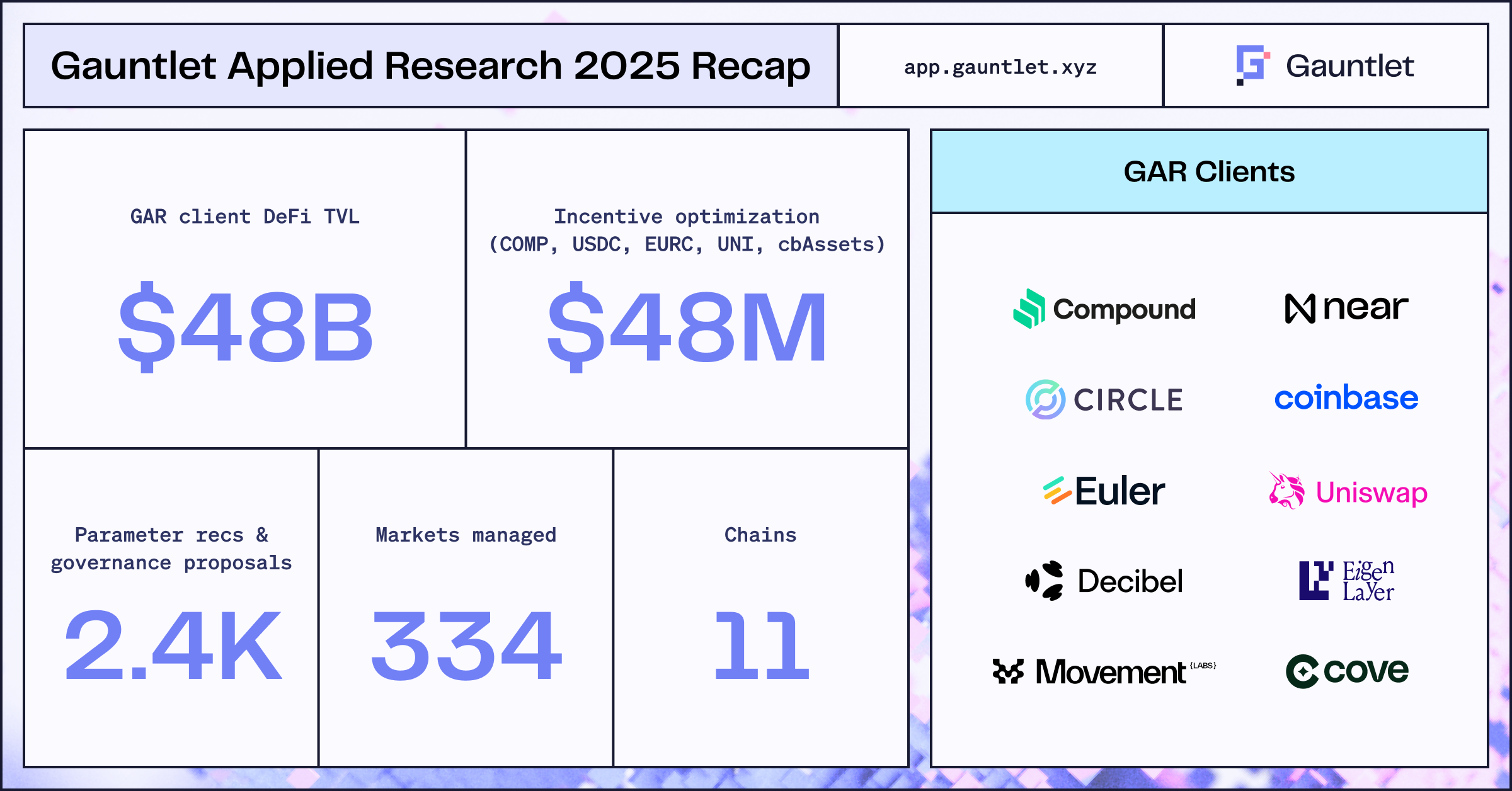%209%20(1).jpg)
Consistent terminology across DAOs allows users, delegates, and stakeholders to communicate and build together more efficiently. Without alignment on definitions, how can decisions be made, tradeoffs discussed, or decentralized consensus reached? The terms, definitions, and additional context provided below are a few we find most important across various optimization problems in DeFi.
Market Spot Price
Definition
Market spot price — or just spot price — refers to the current price of an asset in the market at which the asset can be traded and delivered immediately. Spot prices are used in the context of a venue (e.g., DeFi protocol).
Notes
- For automated market makers (AMMs), spot price refers to the price from trading an infinitesimal amount (akin to a derivative in calculus).
- For order books, the spot price refers to the best bid (highest price at which one can immediately sell) and/or the best ask (lowest price at which one can immediately buy) at the minimum order size. A common but imperfect spot price metric is the mid-price, which is the average of the best bid and best ask. While the mid-price is generally a good approximation for the price at which an asset can be immediately traded, it is not usually possible to trade immediately at the exact mid-price.
Market Fair Price
Definition
Market fair price — or just fair price — refers to a theoretical best estimate of price that accounts for all relevant information.
Notes
- Fair price is modeled rather than read from an exchange UI or an API endpoint.
- Fair price can be considered the price under the efficient market hypothesis.
- Models for fair price tend to be contextual, evaluating data from its liquidity, volatility, correlation structure, market microstructure, and so on, in relation to price reactions and market scenarios.
- When modeling fair price a statistical target could be predicting a spot price X amount of time in the future, which is the opposite time dimension of oracles.
Oracle price
Definition
Oracle price refers to a market price provided through an API call to a third-party service.
Notes
- Using an oracle price is akin to outsourcing modeling a market fair price, equivalent to getting a second opinion.
- Oracle prices can be thought of as a practical approach for obtaining a standard price for various DeFi functions, such as calculating loan health factors.
- The design and incentive mechanisms behind different price oracles can lead to different properties of the oracle price feed.
Slippage
Definition
Slippage is the difference between the execution price and the expected price for a trade. The expected price is usually the spot price immediately before a trade occurs.
Notes
- Trades can have various forms of execution (e.g., TWAP, VWAP), with various components such as time.
- Slippage often references a liquidity model, which estimates the marked-to-market execution cost of a trade relative to a market spot price.
- Traditionally, expected price refers to the screen price or the price a trader sees when initiating the trade.
- Slippage data often includes fees. A reasonable cutoff of what qualifies as a cost would include AMM pool fees but typically not gas fees. In most cases, fees can treated as an independent constant in slippage modeling.
Impact
Definition
Impact is how much market fair price moves due to a trade. It can also be thought of as a cost to the trader due to the information revealed by the transaction. Since the market requires time to process information, the impact can be represented as a time-based curve.
Notes
- Impact is different from slippage because it cannot be directly observed. Impact is something that can only be modeled.
- Impact is an overloaded term with numerous meanings:
- “Trades impact the market”
- “Volatility can impact liquidity”
- “What is the impact of [X] on protocol risk?”
- “The impact of this change on utilization was [X] amount.”
Where only the first quote relates to the definition above.
Dislocation
Definition
Dislocation refers to an asset mispricing relative to the market fair price.
Notes
- Dislocation implies that the spot price has moved to a point where it is "unfair" or far from the market fair price and should be corrected.
- Markets are susceptible to price dislocations when the arbitrage loop cannot be closed.
- Large trades without alpha should dislocate the price temporarily. Large trades with alpha should impact the fair price.
Market Depth [Liquidity]
Definition
Market depth is a measure of liquidity based on the availability (e.g., open orders) of assets for trading.
Notes
- Market depth can be considered the cumulative order size up to a certain dislocation.
- Liquidators are more interested in slippage than market depth.
Blog
View the full presentation
Read the full paper








